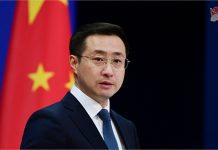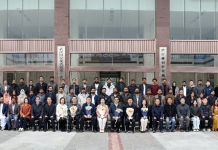From Our
Correspondent
BEIJING: The Communist Party of China (CPC), the world’s largest political party, celebrated its 99th birthday as the country is consolidating its economic recovery amid the COVID-19 epidemic.
Official data shows activities in many Chinese industries, from auto manufacturing to e-commerce, are returning to pre-epidemic levels. Given the country’s solid pace of recovery, Fitch Ratings on Monday raised its 2020 GDP forecast for China to 1.2 percent from 0.7 percent.
The recovery is hard won, though. For months, the COVID-19 epidemic, coupled with lingering trade tensions and weak external demand, has been testing the economic governance capacity of the CPC, which led the country to transform from a vastly impoverished agricultural land into the world’s second-largest economy with better-off people.
Based on the valuable experience it has accumulated over the past decades, the CPC will steer the country toward a healthier and long-term growth through deepening reform and widening opening-up, analysts say.
After four decades of breakneck expansion, the CPC has been pushing China’s economy to transition to high-quality development, putting emphasis on greener and more sustainable growth.
China lowered its economic growth targets over the past few years, and even set no target for this year, showing the country is relying less on using GDP to measure success.
“This marks a great shift in the leadership’s development philosophy, which will continue to have far-reaching impacts on economic and social life,” said Gao Peiyong, vice president of the Chinese Academy of Social Sciences.
In a bid to push forward high-quality development, China has given less weight to traditional high-polluting and high energy-consuming industries even though they are vital sources of jobs and tax revenues.
Instead, the country has doubled down on support for new drivers of growth such as high-end equipment manufacturing, modern services and high-tech industries.
Even in the first quarter when the novel coronavirus epidemic pushed China’s economy into its first contraction in decades, the country still avoided launching a massive stimulus and maintained a tight grip over the property sector.
Further, rather than embarking on traditional infrastructure investment programs, China is seeking more targeted investments in “new infrastructure” such as 5G networks, big data centers and other projects that facilitate innovation and improve weak links in economic and social development.
“Expanding investment in new infrastructure is not a stopgap. It will not only boost consumption and benefit the people, but also facilitate structural adjustments and enhance the sustainability of growth,” said Liu Duo, head of the China Academy of Information and Communications Technology.
Chinese policymakers innovatively started the reform and opening-up policy in 1978 to eliminate the constraints of a planned economy, nurture private sectors and advance state-owned enterprise reforms step by step.
To unleash economic growth, the government has been pressing ahead with reforms to reduce corporate burdens, transform government functions and cut red tape.






